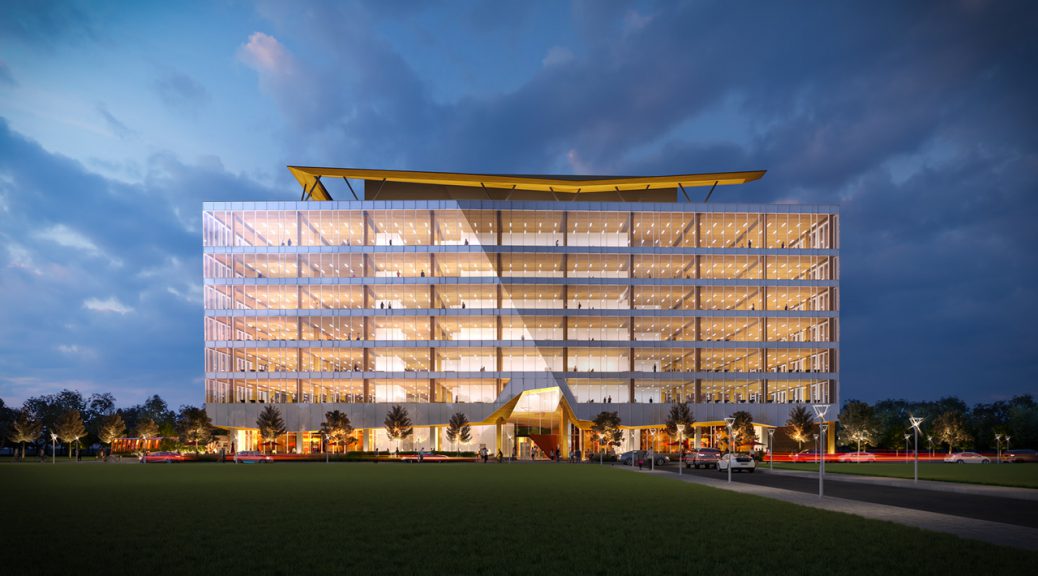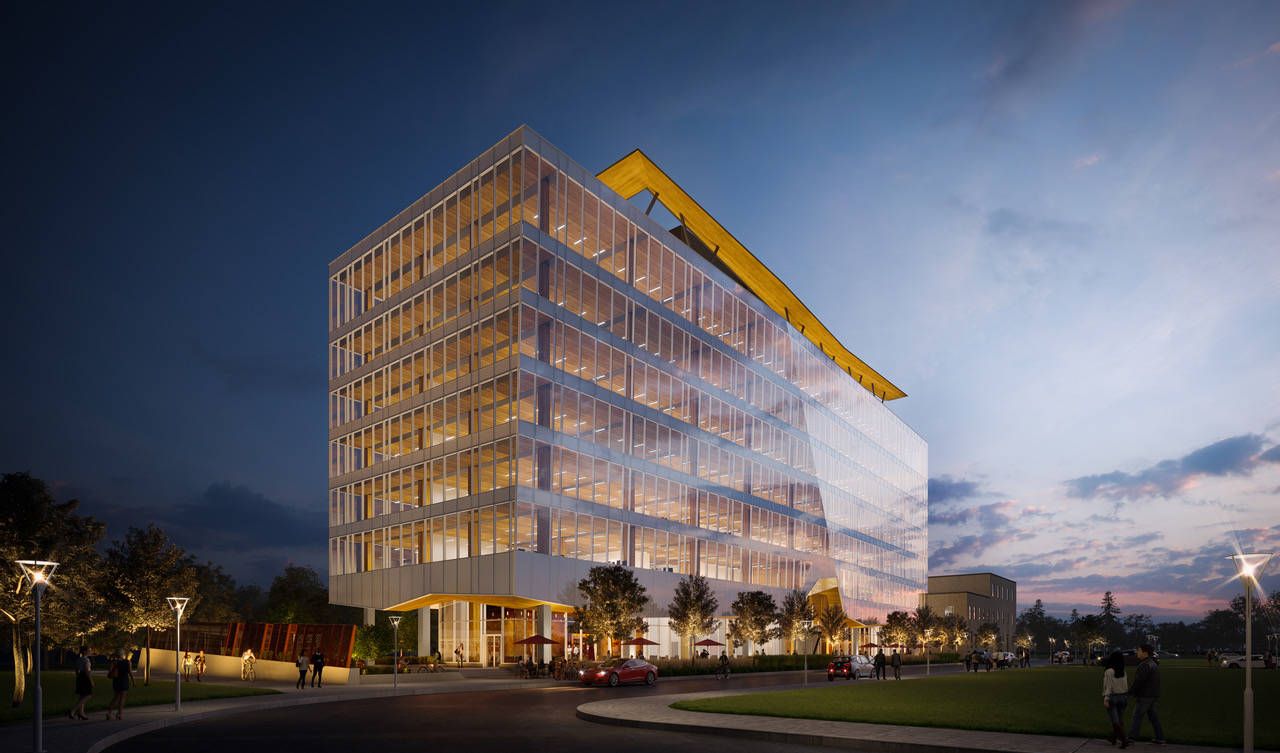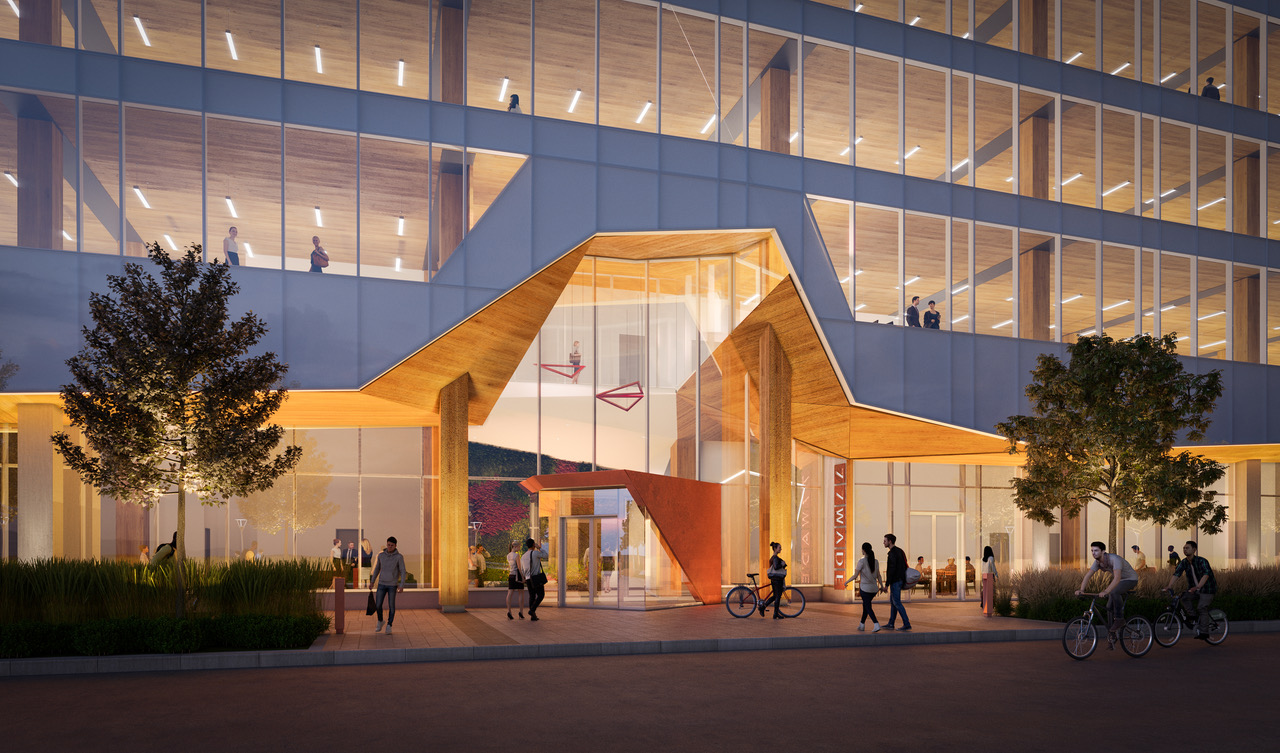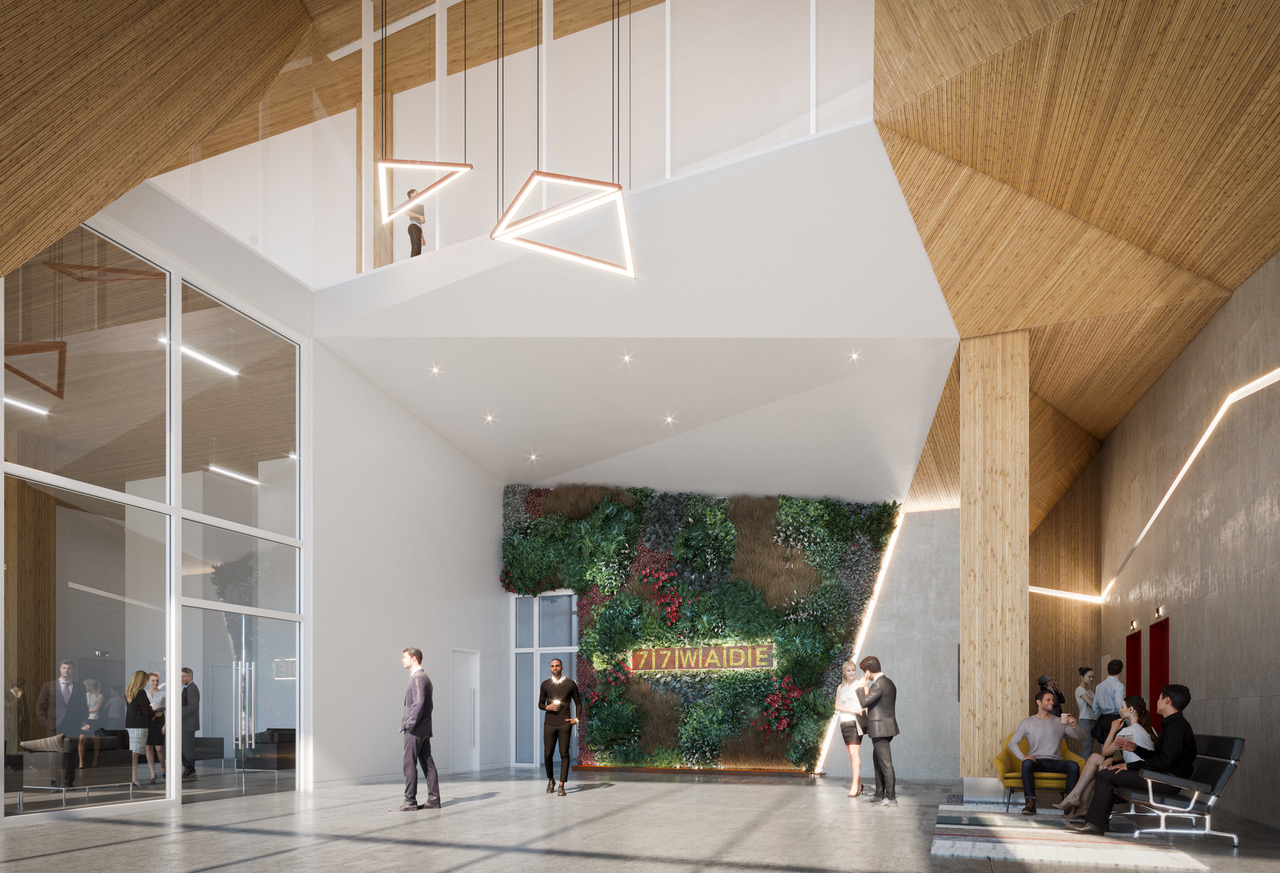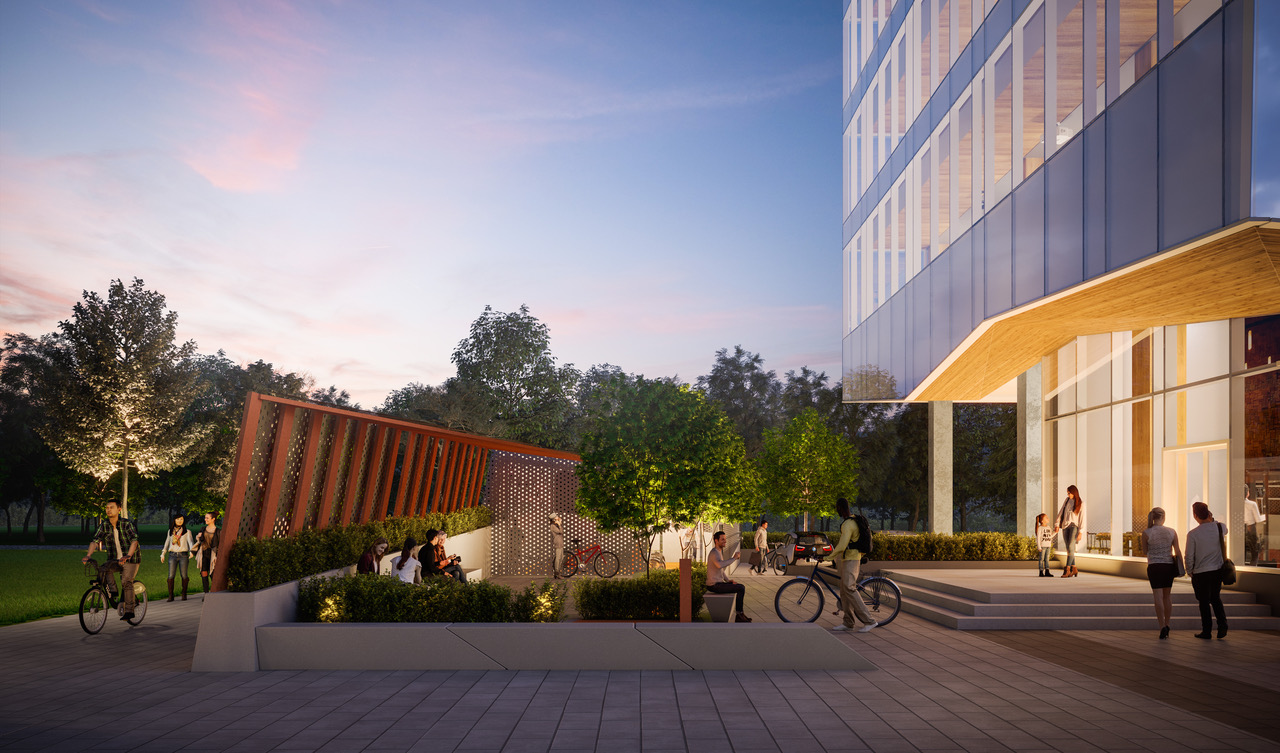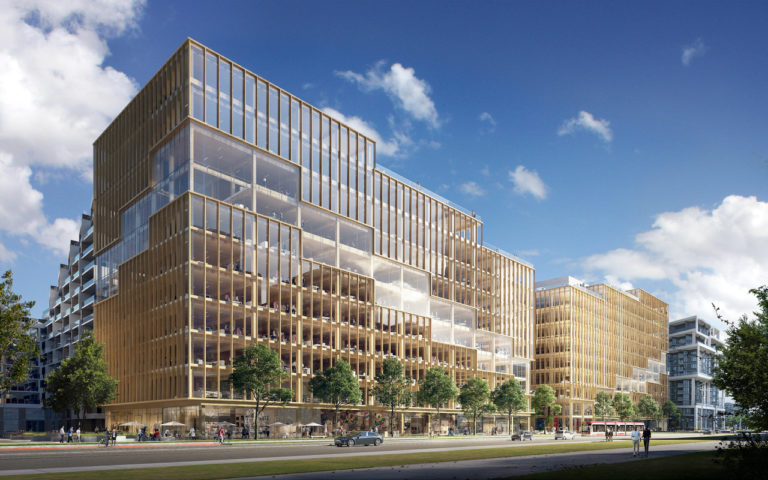Newest addition to Toronto’s emerging Bayside community offers flexible work spaces and connects the city to the waterfront
International real estate firm Hines has announced plans for T3 Bayside, the first office building in Toronto’s emerging Bayside community, located on the shores of Lake Ontario. Designed by the renowned Danish architecture firm 3XN, the 10-story structure will stand at 42 meters high, becoming the tallest timber office building not only in Toronto, but in all of North America.
3XN was selected by Hines to design an office space as part of the unprecedented 2,000-acre revitalization initiative that will transform Toronto’s waterfront. T3 Bayside joins 3XN’s two residential buildings in the area, Aqualuna and Aquabella, which activate Toronto’s newest and most dynamic live-work-play community. The new building and adjoining plaza will serve as dynamic visual and pedestrian gateway to the entire neighborhood, connecting residents and visitors to the revitalized waterfront.
“With 3XN’s world class design and the building’s unrivaled amenity offering, T3 Bayside will truly set a new benchmark for creative office space and will ultimately be responsible for creating more than 3000 jobs at Bayside,” explained Avi Tesciuba, Senior Managing Director and Country Head from Hines.
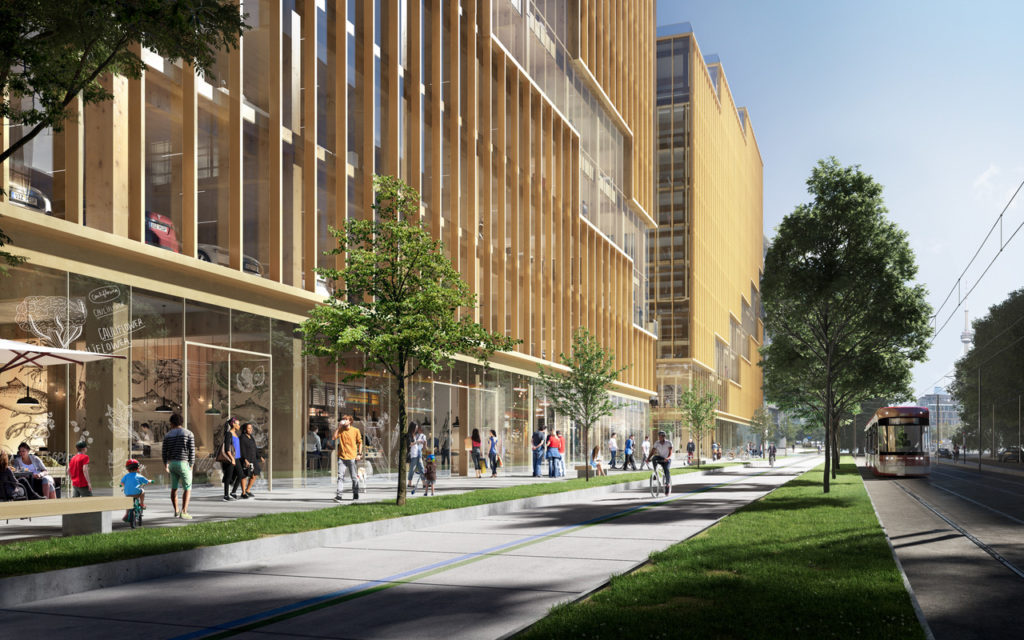
T3 Bayside is designed to reflect and emphasize the emerging neighborhood in which it sits, a community modeled around the intertwining principals of life, work, and play, offering a multitude of opportunities for the next generation of Torontonians. The building creates a continuously activated ground level, with abundant retail opportunities available on all sides. At the base of the building a new central plaza has been created, around which are additional stepped community and shared spaces, including exhibition and gallery spaces, flexible offices space and coworking facilities.
“We are honored to contribute to the development of this new neighborhood in Toronto,” said Kim Herforth Nielsen, Founder and Creative Director of 3XN. “3XN believes in creating buildings that focus on people and contribute to the public realm, which is our aim in this project as well. WithT3 Bayside we created flexible office spaces that can meet the requirements of a diverse group of tenants both at the moment and in the foreseeable future.”
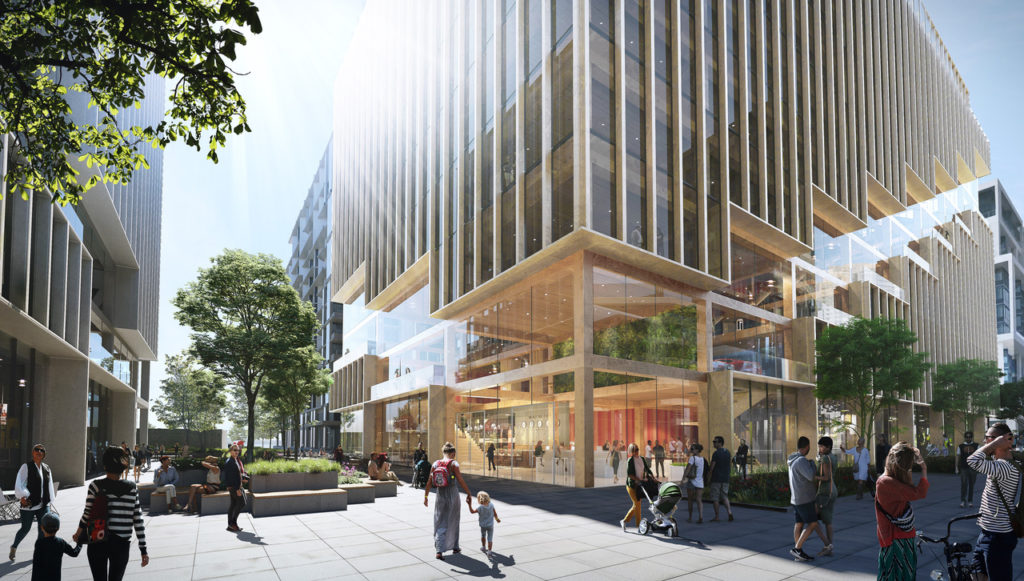
Located at the northern edge of the Bayside development, situated along Queens Quay East and flanked by Merchant’s Wharf, T3 Bayside presents an opportunity to enhance and enforce the existing master plan on multiple levels. Through a series of stepped roof terraces, the building strengthens and emphasizes the movement and heights of the existing master plan at either end of the site. The same terraces step downwards toward the plaza, a new urban gateway and focal point that invites visitors and residents alike into the Bayside community as a whole. T3 Bayside marks the entrance to the neighborhood, leading all visitors toward the new waterfront promenade and thus connecting the city of Toronto with Lake Ontario.
Equal parts urban market, social space, and landscape, the new plaza is the public heart of the T3 Bayside project. Along the edge of the central plaza, corner lobbies, retail and café spaces are designed with flexibility and operability in mind. The building incorporates flexible event and community spaces that face the plaza on multiple levels, all of which can be used individually or booked together to facilitate various programming and events throughout the year. In this way, all activities within the space are visually connected to the central plaza, assuring that activity within the building is part of the exterior experience as well.
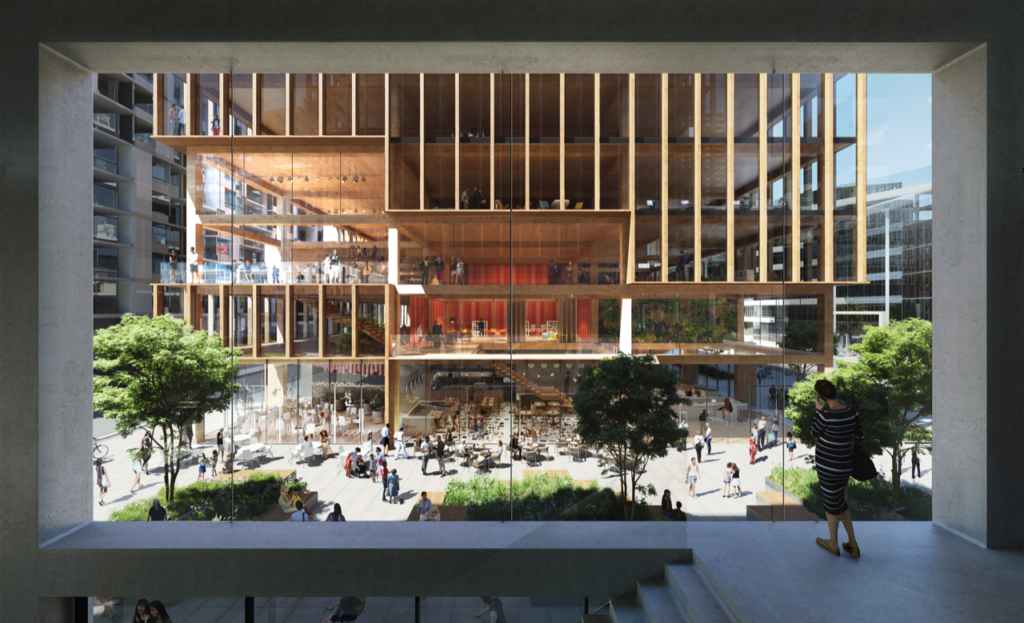
T3 Bayside will be the tallest timber office building in North America. The use of timber contributes to the sustainability of the building, both reducing construction time and allowing the building’s elements to be easily disassembled and re-used for other purposes. The idea of using timber was suggested by the developer Hines. The materiality of timber defines the unique interior aesthetics and will also be reflected in the exterior of the building. Both the material and the shape of the wooden frame will ensure great acoustics. The use of wood, a breathable and absorbent material that allows the release of moisture, ensures a naturally regulated and healthy indoor environment.
“Canada, with its great forests, seems a natural place to build the tallest timber office building in North America and we are excited to be part of this development,” said Jens Holm, Partner in charge of 3XN North America and Head of Design for the T3 project. “The wooden structure will be a prominent part of the design and provide a warm tactile environment for the tenants that doesn’t compromise sustainability. The flexible layout will be able to meet the diverse needs of the users and bring people together.”

T3 Bayside brings together a flexible office space with a mix of coworking and community spaces, offering an experience that appeals to a broad array of tenants. The shared office spaces each hold the potential to combine intimate, single-height zones and social, double-height zones that suit ideas of coworking and are designed to accommodate a variety of programs. These office spaces can be directly connected to the lobby and help to activate the central plaza. Diagonal cuts in the building volume break the massing down to a more human scale around the plaza, and build back up to city scale as they rise across the façade.
About 3XN:
3XN is one of Denmark’s most-renowned architecture firms. Since it was founded in 1986 by Kim Herforth Nielsen, 3XN has been advancing Scandinavian traditions of clarity and generosity in architecture and translating them for a global audience. The firm’s work is grounded in ongoing research into how buildings reflect and influence human behavior and the environment, which results in innovative solutions to increasingly complex contemporary challenges. Among 3XN’s highest-profile projects are Olympic House, the new HQ for the International Olympic Committee in Lausanne, Quay Quarter Tower in Sydney, The Blue Planet (National Aquarium) and Royal Arena, both in Copenhagen, and the Museum of Liverpool. Based in Copenhagen, the firm also maintains offices in Stockholm, New York, and Sydney.
Photos credit: 3XN












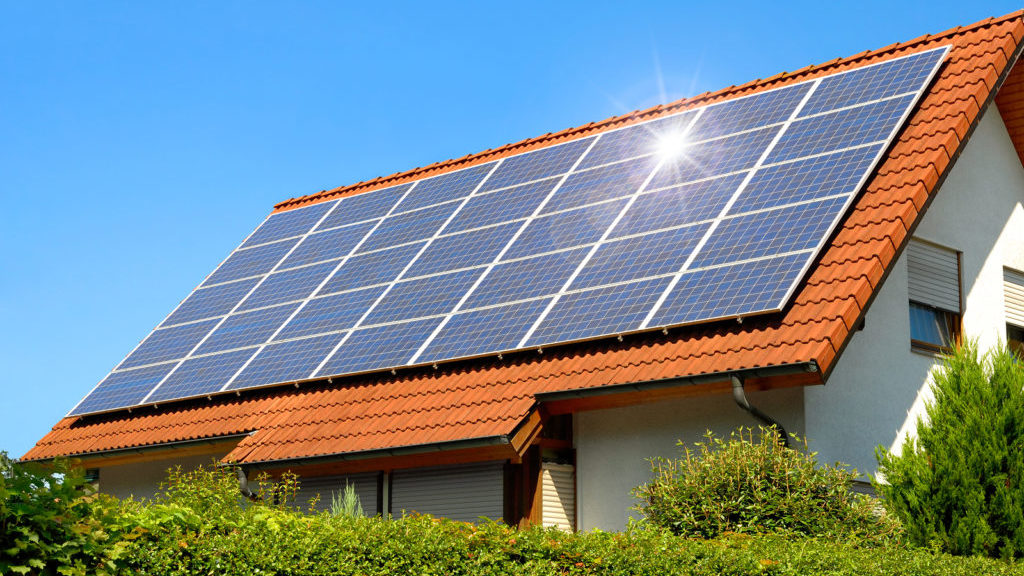
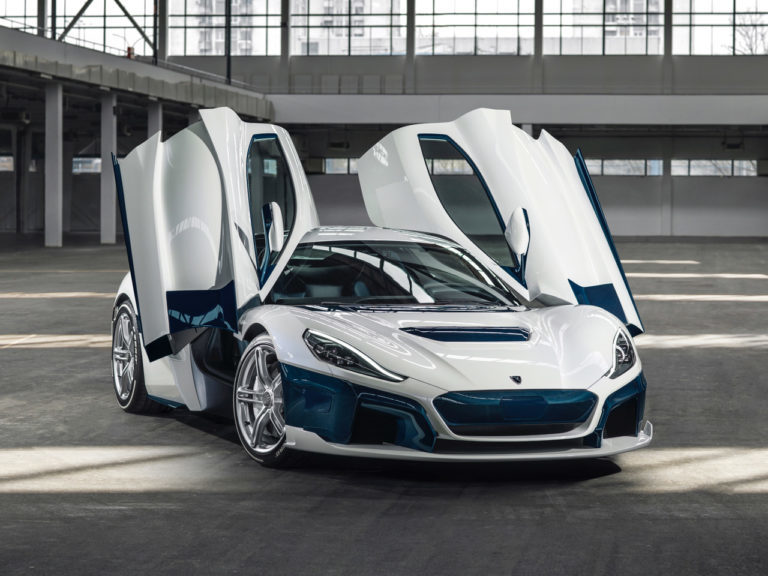

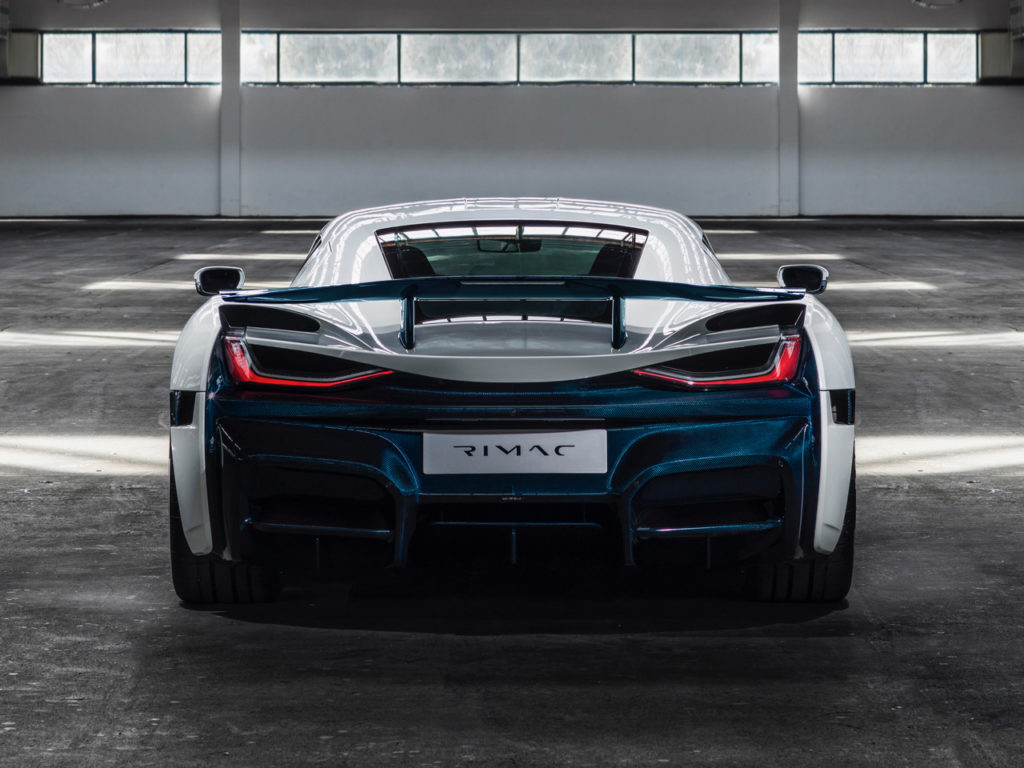
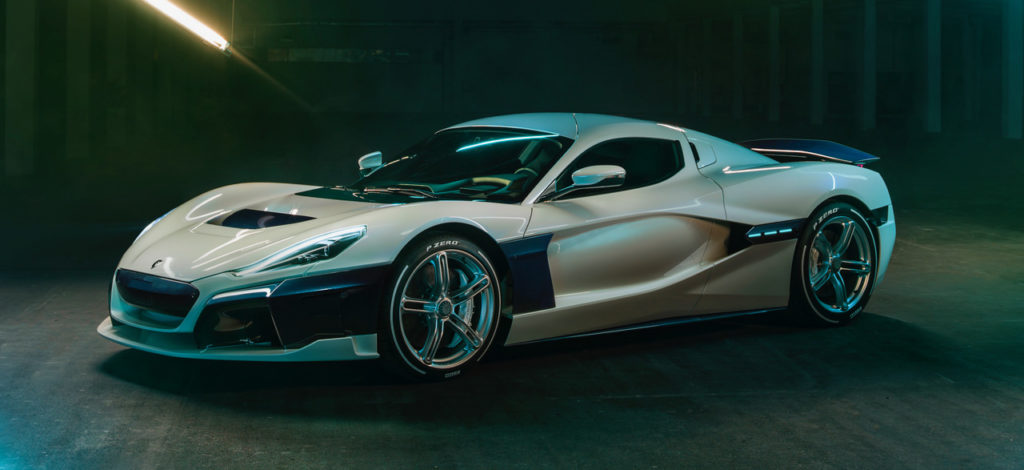
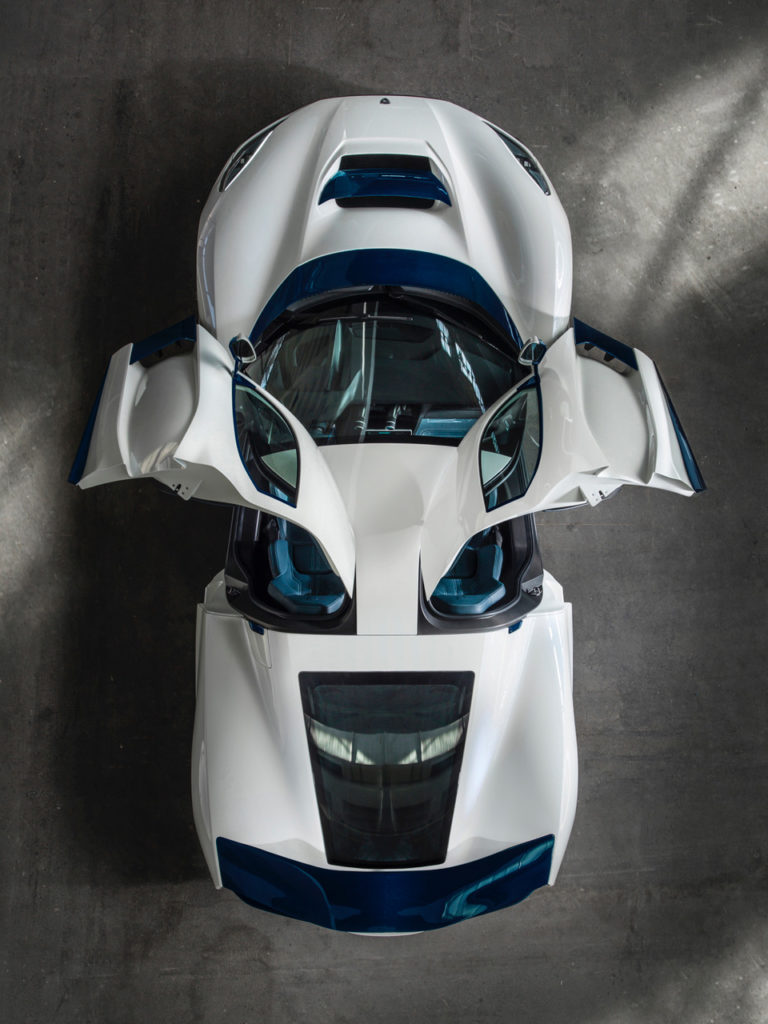
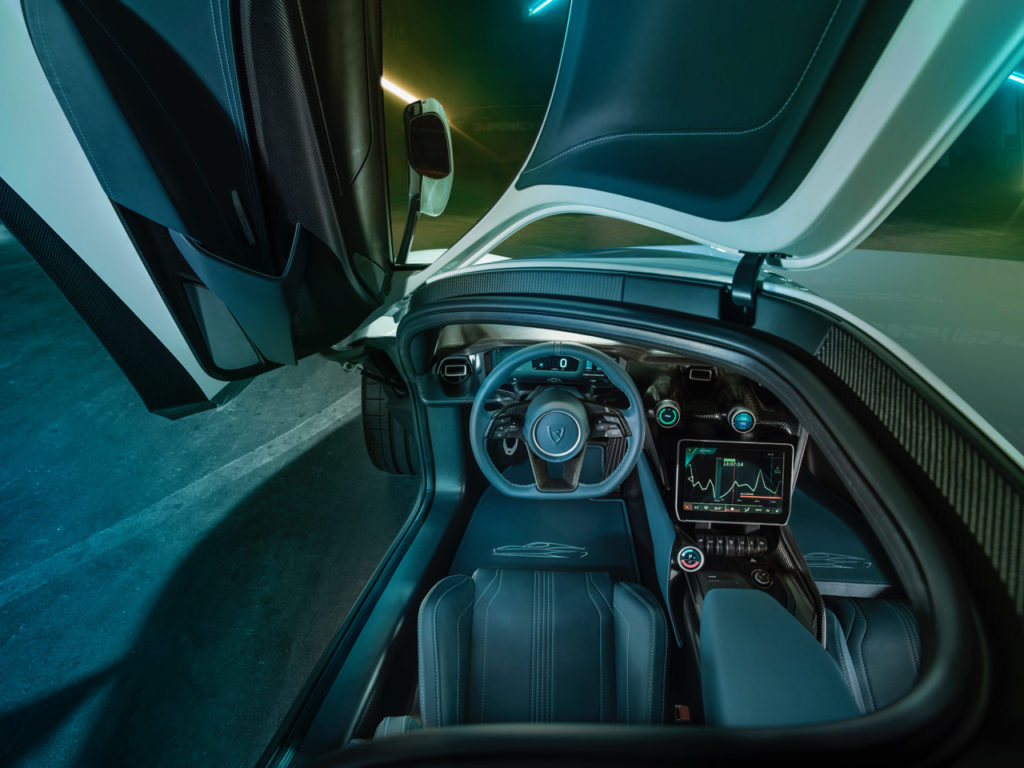
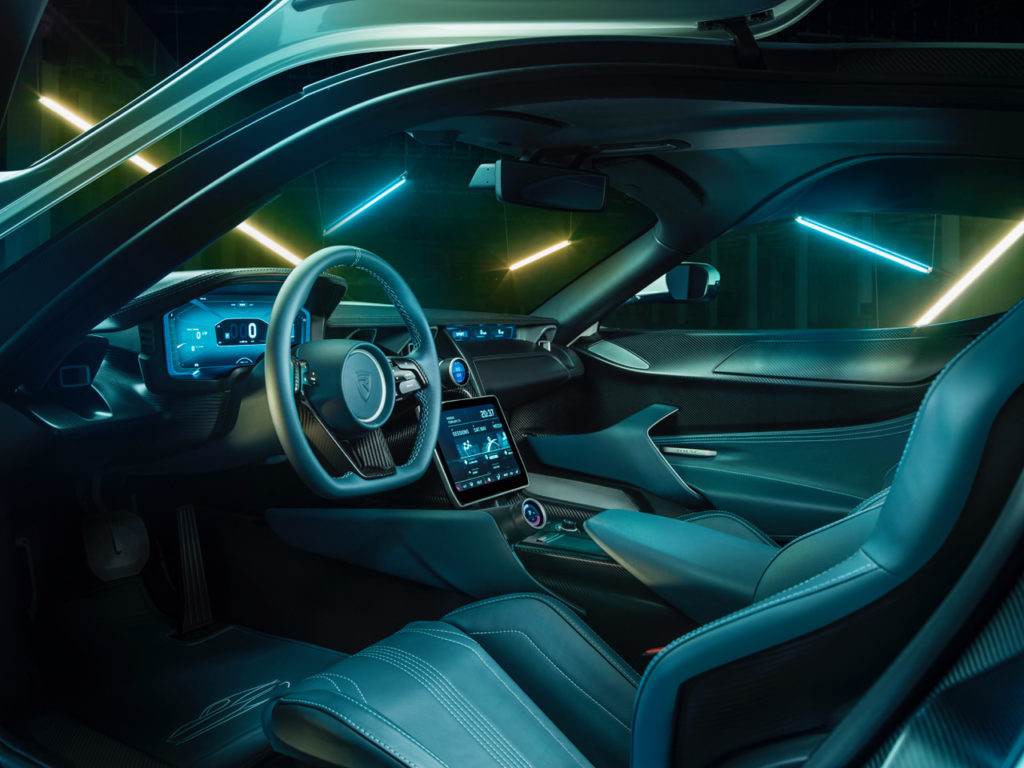
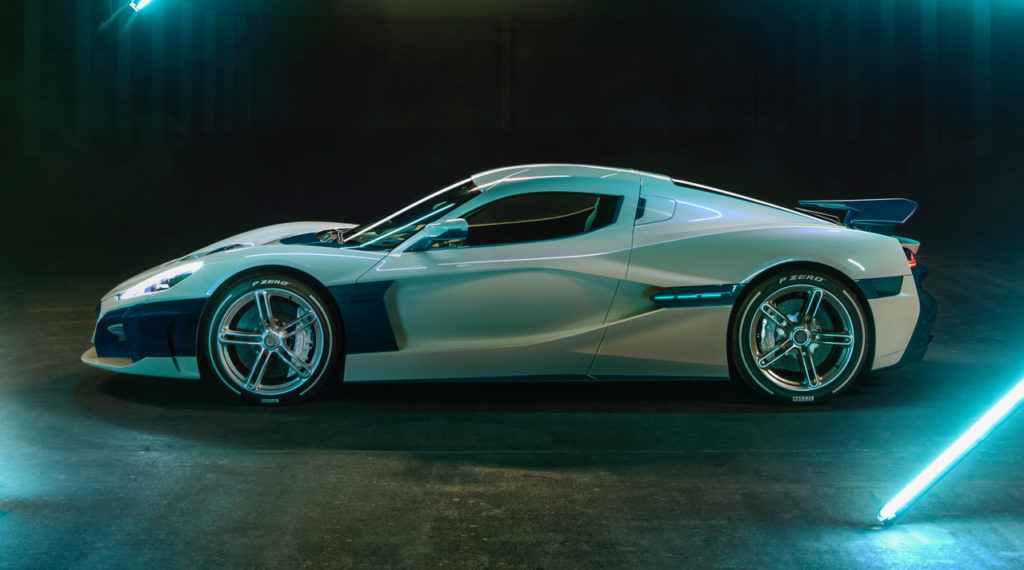
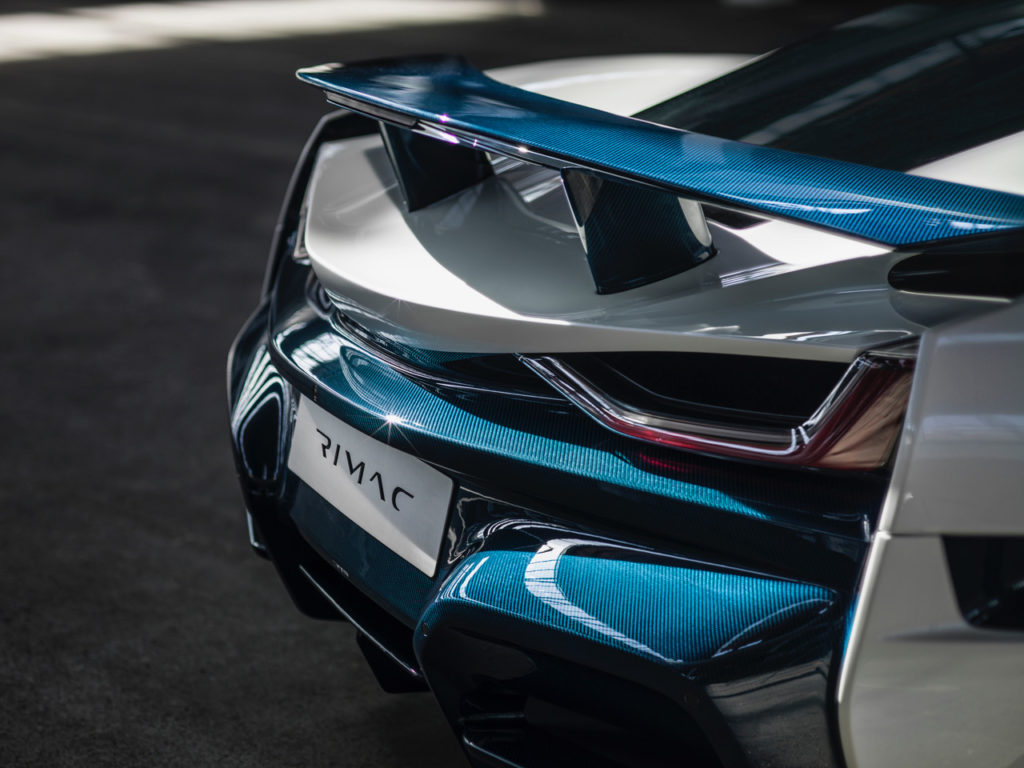
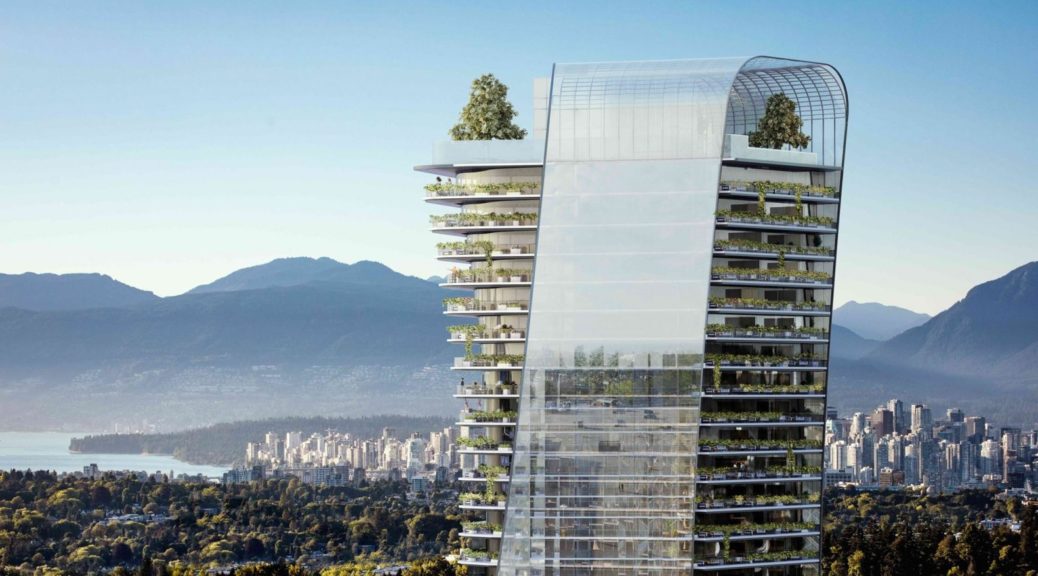















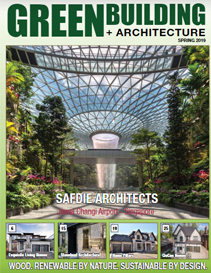
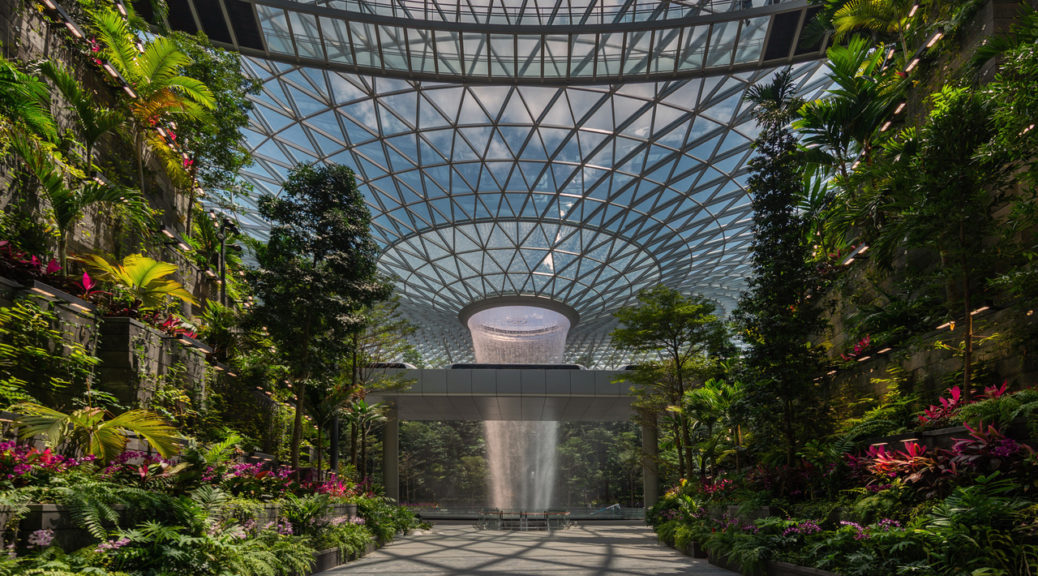

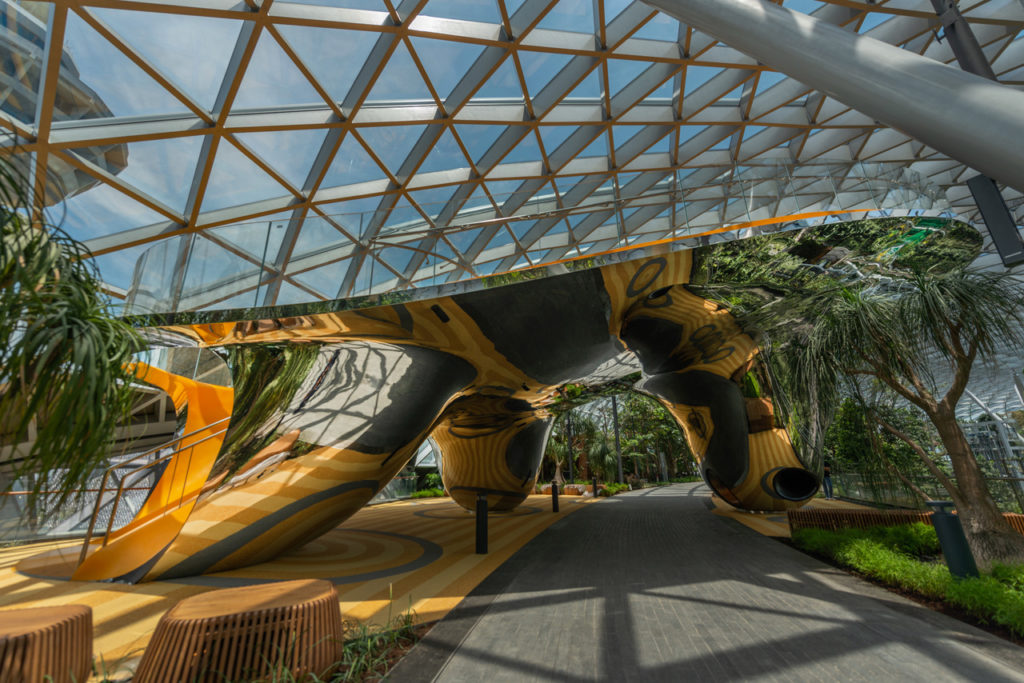
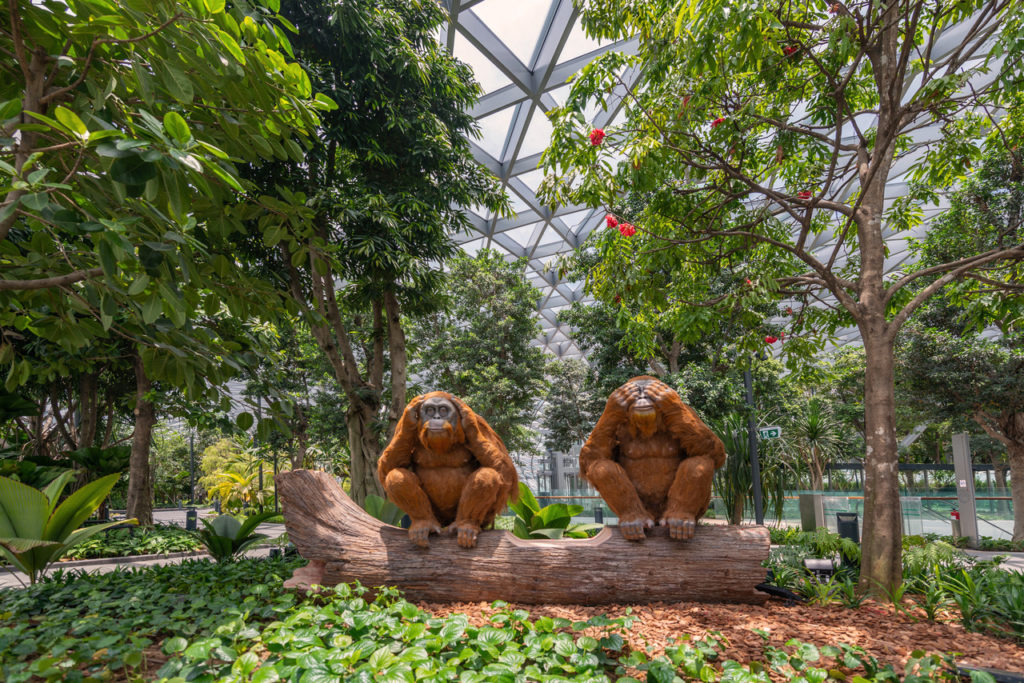
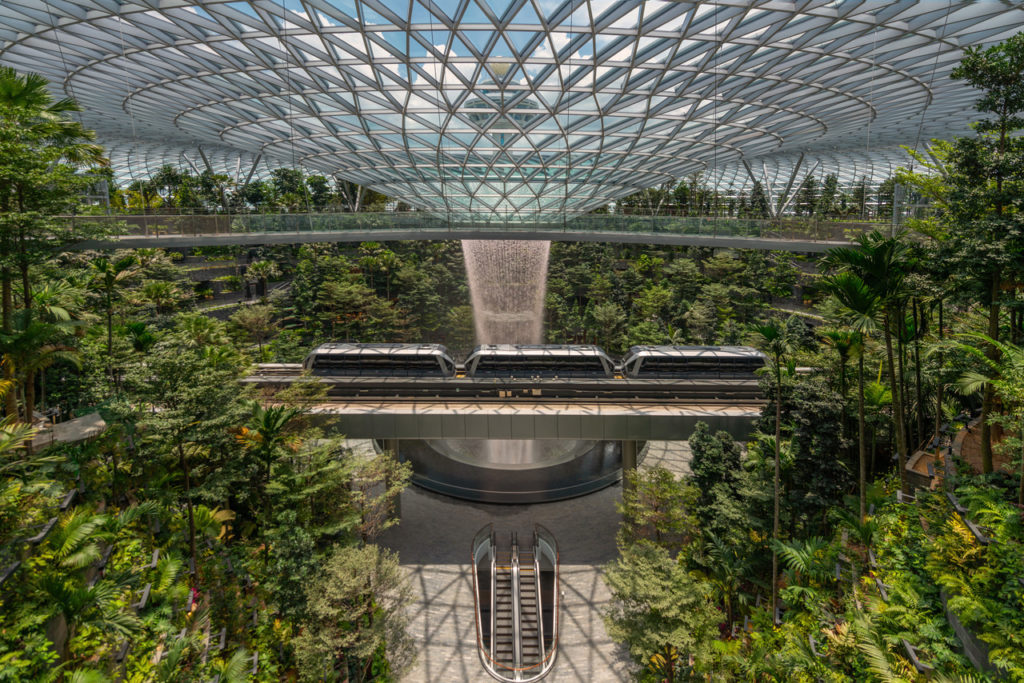
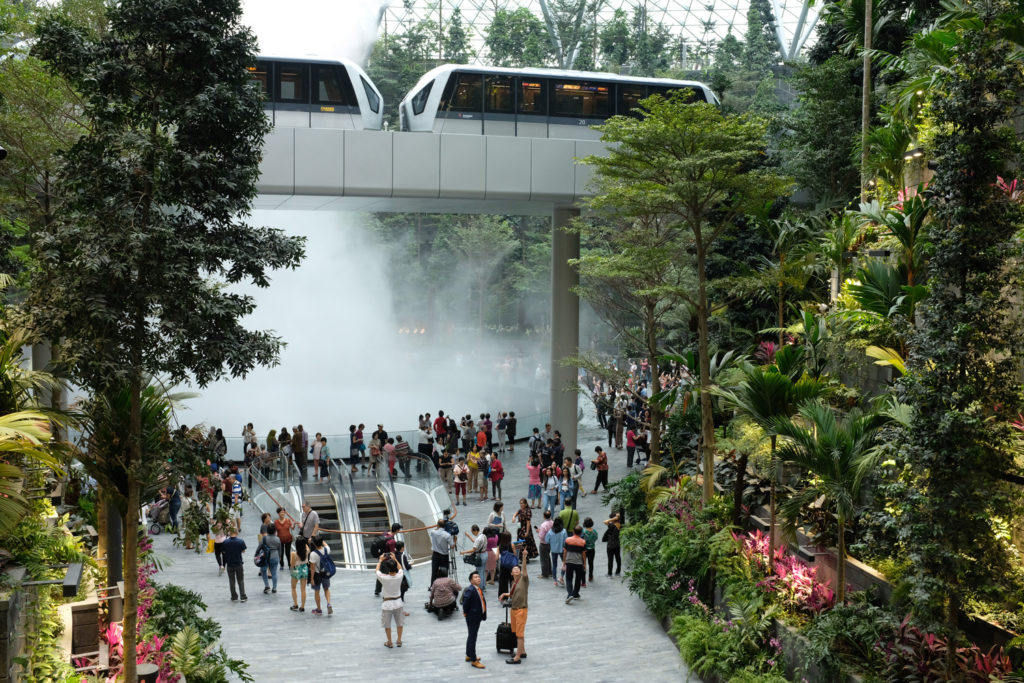
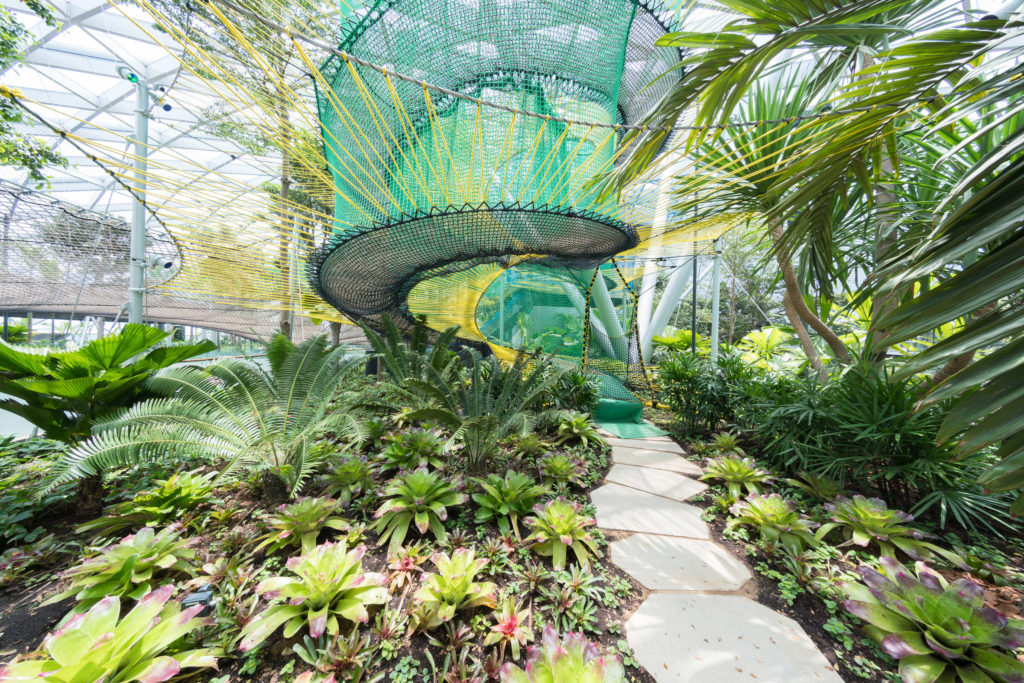
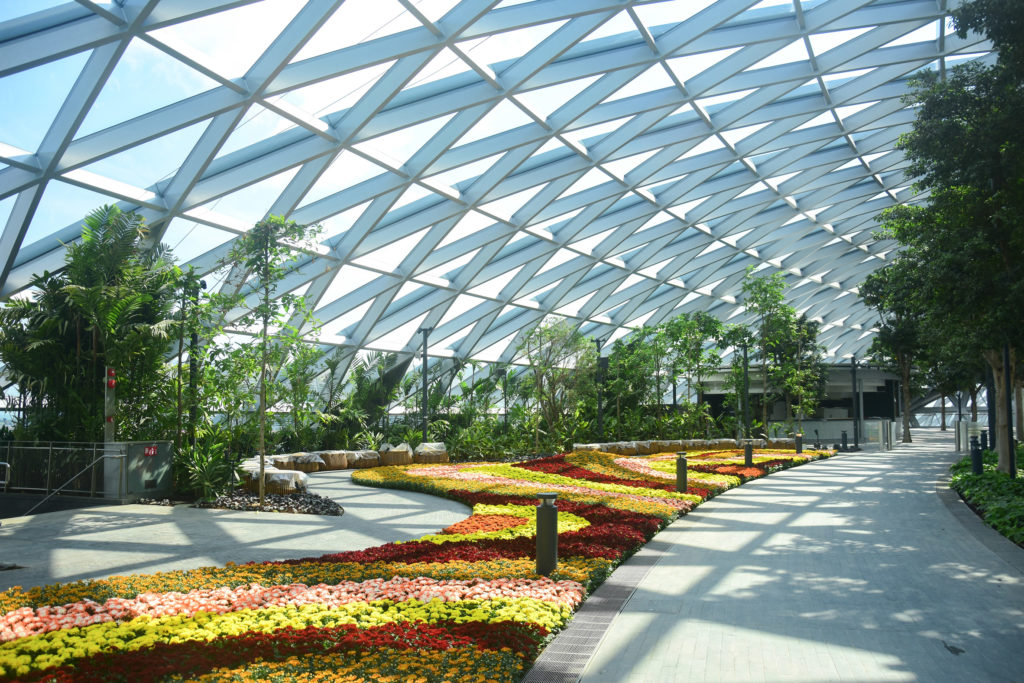
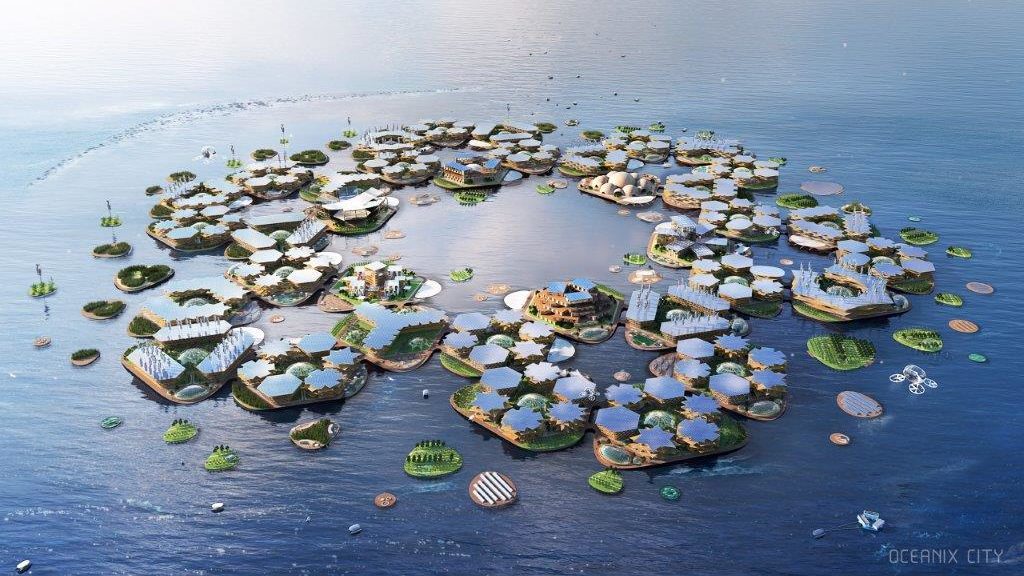
 Image by BIG-Bjarke Ingels Group “9 out of 10 of the world’s largest cities will be exposed to rising seas by 2050. The sea is our fate – it may also be our future. The first sustainable and self-sustained floating community Oceanix City is designed as a human made ecosystem channeling circular flows of energy, water, food and waste. Oceanix City is a blueprint for a modular maritime metropolis anchored in the UN’s Sustainable Development Goals. The additive architecture can grow, transform and adapt organically over time, evolving from a neighborhood of 300 residents to a city of 10,000 – with the possibility of scaling indefinitely to provide thriving nautical communities for people who care about each other and our planet.” Bjarke Ingels, Founding Partner, BIG-Bjarke Ingels Group.
Image by BIG-Bjarke Ingels Group “9 out of 10 of the world’s largest cities will be exposed to rising seas by 2050. The sea is our fate – it may also be our future. The first sustainable and self-sustained floating community Oceanix City is designed as a human made ecosystem channeling circular flows of energy, water, food and waste. Oceanix City is a blueprint for a modular maritime metropolis anchored in the UN’s Sustainable Development Goals. The additive architecture can grow, transform and adapt organically over time, evolving from a neighborhood of 300 residents to a city of 10,000 – with the possibility of scaling indefinitely to provide thriving nautical communities for people who care about each other and our planet.” Bjarke Ingels, Founding Partner, BIG-Bjarke Ingels Group.  Image by BIG-Bjarke Ingels Group Oceanix City is designed to grow, transform and adapt organically over time, evolving from neighborhoods to cities with the possibility of scaling indefinitely. Modular neighborhoods of 2 hectares create thriving self-sustaining communities of up to 300 residents with mixed-use space for living, working and gathering during day and night time. All built structures in the neighborhood are kept below 7 stories to create a low center of gravity and resist wind. Every building fans out to self-shade internal spaces and public realm, providing comfort and lower cooling costs while maximizing roof area for solar capture.
Image by BIG-Bjarke Ingels Group Oceanix City is designed to grow, transform and adapt organically over time, evolving from neighborhoods to cities with the possibility of scaling indefinitely. Modular neighborhoods of 2 hectares create thriving self-sustaining communities of up to 300 residents with mixed-use space for living, working and gathering during day and night time. All built structures in the neighborhood are kept below 7 stories to create a low center of gravity and resist wind. Every building fans out to self-shade internal spaces and public realm, providing comfort and lower cooling costs while maximizing roof area for solar capture.  Image by BIG-Bjarke Ingels Group Communal farming is the heart of every platform, allowing residents to embrace sharing culture and zero waste systems. Below sea level, beneath the platforms, biorock floating reefs, seaweed, oysters, mussel, scallop and clam farming clean the water and accelerate ecosystem regeneration.
Image by BIG-Bjarke Ingels Group Communal farming is the heart of every platform, allowing residents to embrace sharing culture and zero waste systems. Below sea level, beneath the platforms, biorock floating reefs, seaweed, oysters, mussel, scallop and clam farming clean the water and accelerate ecosystem regeneration.  Image by BIG-Bjarke Ingels Group By clustering six neighborhoods around a protected central harbor, larger villages of 12 hectares can accommodate up to 1,650 residents. Social, recreational and commercial functions are placed around the sheltered inner ring to encourage citizens to gather and move around the village. Residents can easily walk or boat through the city using electric vehicles.
Image by BIG-Bjarke Ingels Group By clustering six neighborhoods around a protected central harbor, larger villages of 12 hectares can accommodate up to 1,650 residents. Social, recreational and commercial functions are placed around the sheltered inner ring to encourage citizens to gather and move around the village. Residents can easily walk or boat through the city using electric vehicles.  Image by BIG-Bjarke Ingels Group Aggregating to reach a critical density, six villages connect to form a city of 10,000 residents with a strong sense of community and identity. A larger protected harbor is formed in the heart of the city. Floating destinations and art, including six specialized landmark neighborhoods with a public square, market place and centers for spirituality, learning, health, sport and culture create destinations drawing residents from across the city and anchoring each neighborhood in a unique identity. All communities regardless of size will prioritize locally sourced materials for building construction, including fast-growing bamboo that has six times the tensile strength of steel, a negative carbon footprint, and can be grown on the neighborhoods themselves.
Image by BIG-Bjarke Ingels Group Aggregating to reach a critical density, six villages connect to form a city of 10,000 residents with a strong sense of community and identity. A larger protected harbor is formed in the heart of the city. Floating destinations and art, including six specialized landmark neighborhoods with a public square, market place and centers for spirituality, learning, health, sport and culture create destinations drawing residents from across the city and anchoring each neighborhood in a unique identity. All communities regardless of size will prioritize locally sourced materials for building construction, including fast-growing bamboo that has six times the tensile strength of steel, a negative carbon footprint, and can be grown on the neighborhoods themselves. 
 Image by BIG-Bjarke Ingels Group https://big.dk/#projects-sfc
Image by BIG-Bjarke Ingels Group https://big.dk/#projects-sfc